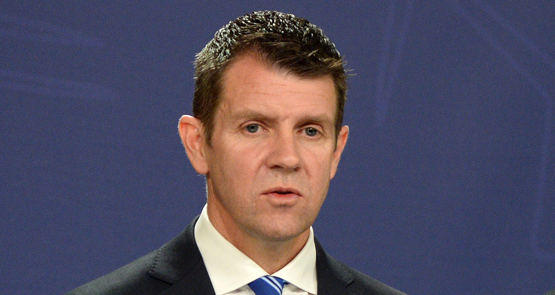Traditionally, the presentation of the NSW budget has been a political rather than an economic event, but the 2015 budget has gone a stage further and become a public relations extravaganza.
This morning the Treasurer, Gladys Berejiklian, invited cameras into her Martin Place office, and the pictures will be all over the television news tonight and on tomorrow’s front pages.
The headline “grabber” is that she will announce a $2.1 billion surplus, about $400 million more than Treasury’s forecast earlier this year.
The recent passage of the “poles and wires” legislation through Parliament means that she will spice tomorrow’s speech with the biggest infrastructure spend that NSW has ever seen.
Roads, tunnels, trains, hospitals and schools — billions of dollars will be locked into the forward spending as Premier Mike Baird plans for the Coalition’s re-election campaign in March 2019.
“The Mike and Gladys Show” is playing to packed houses in Sydney’s CBD, but not in other places across the state, where jobs are scarce, housing is even scarcer, services are being cut and the rising cost of living is hurting.
The state’s finances have a golden lining thanks to the Sydney property bubble. Since January home investors have poured $1 billion in stamp duty into the state’s coffers. For the whole of the 2014-15 financial year stamp duty receipts are expected to be more than $6 billion. To that cash windfall you can add revenue from rising land tax.
While politicians may whinge about the dangerously excessive heat in the Sydney property market — prices up some 30% in a year — they are greedily taking the tax revenue it provides. And you can bet that Berejiklian will not cut stamp duty in her budget, nor will she utter the word “privatisation”.
But there will be acknowledgement of community concern over the allocation of infrastructure spending, with the lion’s share currently directed at making life easier for Sydney commuters.
In an overtly political decision, the Coalition will allocate a record $400 million into the Housing Acceleration Fund to speed up the delivery of more housing.
HAF has been allocated for infrastructure projects supporting 161,000 new homes, and the extra funding will double that number in the year ahead.
However, Baird has still to come clean on his election pledge to create a $1 billion social and affordable housing program with two peak groups, Council of Social Services NSW and Infrastructure Partnerships Australia.
“The Mike and Gladys Show” is designed to create a “feel good” factor across a community that is already rejoicing from last week’s State of Origin victory over Queensland at the MCG.
But leaving aside this hoopla, “sneaky” measures may be hidden in the budget detail by cash-strapped cabinet ministers and Treasury officials.
So stay on the look-out for any tax increases, heavier traffic fines, school fees for public schools or “co-payments” for hospital admissions.
NSW may appear to be floating on mega-revenue and a Triple-A credit rating, but governments will always find new ways of slipping into the people’s pockets and wallets to grab extra cash.
Baird and Berejiklian are former bankers, and their first budget will reflect their pro-business approach. Although not ideologically driven like Prime Minister Tony Abbott and his team, they cling to the belief that a booming capitalist economy will provide “trickle down” economic activity to protect poorer sections of the community and give them opportunity.
They have crafted tomorrow’s budget to address the NSW economy, the CBD, the infrastructure lobby and potential purchasers of the state’s electricity distribution network.
Later this week Luke Foley’s Labor Opposition has the opportunity to present a rational alternative in which NSW is not treated like a balance sheet but as a community of people with real needs.









The Crikey Circus is another show currently in town; but if it wishes to be taken seriously, doesn’t it need instead of simply repeating “them bad”, instead provide what it believes should be done?
Nothing new in that. We don’t get much over the sandstone and often less from our alleged supporters in the LNP. we have been looking for a decent route over the mountains for over 40 years… the great western road repair zone, certainly not a highway.
The gt west hway has seen vast improvements over last 20 years. What do you want? An elevated freeway??
Try bells line of rd then, much less busy.
Wow, a whole 400 million for new houses! these figures always sound great until one grasps the calculator. Divide 400 million by 400,000 and the result is 1000 new houses.
Thats all,in this era of cheap money why arent they building tens of thousands of new houses?